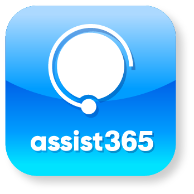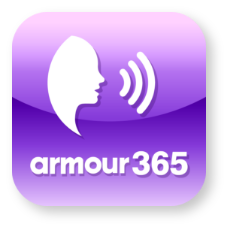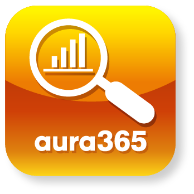A Beginner’s Guide to Speech Recognition AI
AI speech recognition is a technology that allows computers and applications to understand human speech data. It is a feature that has been around for decades, but it has increased in accuracy and sophistication in recent years.
Speech recognition works by using artificial intelligence to recognize the words or language that a person speaks and then translate that content into text. It’s important to note that this technology is still in its infancy but is improving its accuracy rapidly.
What is Speech Recognition AI?
Speech recognition enables computers, applications and software to comprehend and translate human speech data into text for business solutions. The speech recognition model works by using artificial intelligence (AI) to analyze your voice and language, identify by learning the words you are saying, and then output those words with transcription accuracy as model content or text data on a screen.
Speech Recognition in AI
Speech recognition is a significant part of artificial intelligence (AI) applications. AI is a machine’s ability to mimic human behaviour by learning from its environment. Speech recognition enables computers and software applications to “understand” what people are saying, which allows them to process information faster and with high accuracy. Speech recognition is also used as models in voice assistants like Siri and Alexa, which allow users to interact with computers using natural transcription language data or content.
Thanks to recent advancements, speech recognition technology is now more precise and widely used than in the past. It is used in various fields, including healthcare, customer service, education, and entertainment. However, there are still challenges to overcome, such as better handling of accents and dialects and the difficulty of recognizing speech in noisy environments. Despite these challenges, speech recognition is an exciting area of artificial intelligence with great potential for future development.
How Does Speech Recognition AI Work?
Speech recognition or voice recognition is a complex process that involves audio accuracy over several steps and data or language solutions, including:
- Recognizing the words, models and content in the user’s speech or audio. This business accuracy step requires training the model to identify each word in your vocabulary or audio cloud.
- Converting those audios and language into text. This step involves converting recognized audios into letters or numbers (called phonemes) so that other parts of the AI software solutions system can process those models.
- Determining what was said. Next, AI looks at which content and words were spoken most often and how frequently they were used together to determine their meaning (this process is known as “predictive modelling”).
- Parsing out commands from the rest of your speech or audio content (also known as disambiguation).
Speech Recognition AI and Natural Language Processing
Natural Language Processing is a part of artificial intelligence that involves analyzing data related to natural language and converting it into a machine- comprehendible format. Speech recognition and AI play a pivotal role in NLPs in improving the accuracy and efficiency of human language recognition.
A lot of businesses now include speech-to-text software or speech recognition AI to enhance their business applications and improve customer experience. By using speech recognition AI and natural language processing together, companies can transcribe calls, meetings etc. Giant companies like Apple, Google, and Amazon are leveraging AI-based speech or voice recognition applications to provide a flawless customer experience.
Use Cases of Speech Recognition AI
Speech recognition AI is being used as business solutions in many industries and applications. From ATMs to call centers and voice-activated audio content assistants, AI is helping people interact with technology and software more naturally with better data transcription accuracy than ever before.
Call Centers
Speech recognition is one of the most popular uses of speech AI in call centers. This technology allows you to listen to what customers are saying and then use that information via cloud models to respond appropriately.
You can also use speech recognition technology for voice or audio biometrics, which means using voice patterns as proof of identity or authorization for access solutions or services without relying on passwords or other traditional methods or models like fingerprints or eye scans. This can eliminate business issues like forgotten passwords or compromised security codes in favor of something more secure: your voice!
Banking
Banking and financial institutions are using speech AI applications to help customers with their business queries. For example, you can ask a bank about your account balance or the current interest rate on your savings account. This cuts down on the time it takes for customer service representatives to answer questions they would typically have to research and look at cloud data, which means quicker response times and better customer service.
Telecommunications
Speech-enabled AI is a technology that’s gaining traction in the telecommunications industry. Speech recognition technology models enable calls to be analyzed and managed more efficiently. This allows agents to focus on their highest-value tasks to deliver better customer service.
Customers can now interact with businesses in real-time 24/7 via voice transcription solutions or text messaging applications, which makes them feel more connected with the company and improves their overall experience.
Healthcare
Speech AI is a learning technology used in many different areas as transcription solutions. Healthcare is one of the most important, as it can help doctors and nurses care for their patients better. Voice-activated devices use learning models that allow patients to communicate with doctors, nurses, and other healthcare professionals without using their hands or typing on a keyboard.
Doctors can use speech recognition AI via cloud data to help patients understand their feelings and why they feel that way. It’s much easier than having them read through a brochure or pamphlet—and it’s more engaging. Speech AI can also take down patient histories and help with medical transcriptions.
Media and Marketing
Tools such as dictation software use speech recognition and AI to help users type or write more in much less time. Roughly speaking, copywriters and content writers can transcribe as much as 3000-4000 words in as less as half an hour on an average.
Accuracy, though, is a factor. These tools don’t guarantee 100% foolproof transcription. Still, they are extremely beneficial in helping media and marketing people in composing their first drafts.
Challenges in Working with Speech Recognition AI
There are many challenges in working with speech AI. For example, both technology and cloud are new and developing rapidly. As a result, it isn’t easy to make accurate predictions about how long it will take for a company to build its speech-enabled product.
Another challenge with speech AI is getting the right tools to analyze your data. Most people need access to this technology or cloud, so finding the right tool for your requirements may take time and effort.
You must use the correct language and syntax when creating your algorithms on cloud. This can be difficult because it requires understanding how computers and humans communicate. Speech recognition still needs improvement, and it can be difficult for computers to understand every word you say.
If you use speech recognition software, you will need to train it on your voice before it can understand what you’re saying. This can take a long time and requires careful study of how your voice sounds different from other people’s.
The other concern is that there are privacy laws surrounding medical records. These laws vary from state to state, so you’ll need to check with your jurisdiction before implementing speech AI technology.
Educating your staff on the technology and how it works is important if you decide to use speech AI. This will help them understand what they’re recording and why they’re recording it.
Frequently Asked Questions
How does speech recognition work?
Speech recognition AI is the process of converting spoken language into text. The technology uses machine learning and neural networks to process audio data and convert it into words that can be used in businesses.
What is the purpose of speech recognition AI?
Speech recognition AI can be used for various purposes, including dictation and transcription. The technology is also used in voice assistants like Siri and Alexa.
What is speech communication in AI?
Speech communication is using speech recognition and speech synthesis to communicate with a computer. Speech recognition can allow users to dictate text into a program, saving time compared to typing it out. Speech synthesis is used for chatbots and voice assistants like Siri and Alexa.
Which type of AI is used in speech recognition?
AI and machine learning are used in advanced speech recognition software, which processes speech through grammar, structure, and syntax.
What are the difficulties in voice recognition AI in artificial intelligence?
Imprecise and misleading translations. Speech recognition software can occasionally misinterpret what someone is saying. Computers have difficulty understanding the contextual relation of words and sentences, leading them to misinterpret what a speaker means.






The Power of Natural Language Processing Software
[…] various applications such as machine translation, text summarization, text categorization, and speech recognition. Its utilization enables organizations to derive valuable insights from textual data, leading to […]